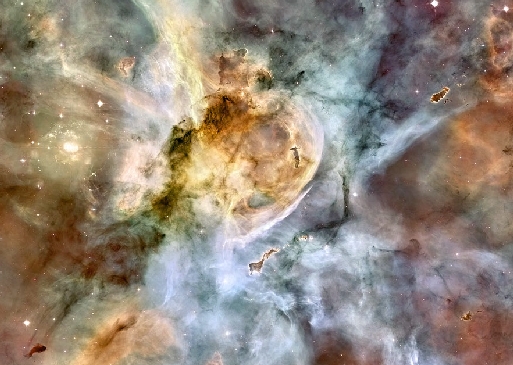
 The
Birth of Giants: How Are Massive Stars Formed?
The
Birth of Giants: How Are Massive Stars Formed? 
Dr. Tom Bell, an
astronomer at Caltech/CSO, is
going to give a free lecture at the planetarium of
'Imiloa Astronomy Center on May 28th at
noon.
Massive stars are the rockn'roll giants of the heavens:
they live fast, die young and go out with a bang.
Massive stars are the cosmic engines that help shape the galaxies they
inhabit; heating them with harsh
radiation, sculpting them with strong winds and enriching them with
exotic elements when they die. They
end their lives in supernova blasts that can outshine whole galaxies,
scattering their ashes out into space
and helping to kick-start the next generation of stars.
Studying the formation of massive stars isn't easy
and the early lives of these monsters are not yet fully
understood. Though hard to miss once fully grown, massive stars spend
their infancy hidden deep within
thick cocoons of gas and dust, making it difficult for us to observe
them directly. They also grow up fast,
so spotting them whilst they are still being formed has proven very
tricky.
Through decades of study, we have learned much about the
process of massive star formation, but the
picture is still incomplete and many questions remain. How do they
first start to form? And where? Do
they always form in clusters? And why are they so much rarer than
Sun-like stars? In this talk, we'll follow
the search for answers and uncover some new pieces to the puzzle along
the way.
Dr. Tom Bell is a postdoctoral scholar at the
California Institute of Technology. He gained his PhD
at University College, London (UK), studying the effects of radiation
from massive stars on the interstellar
medium. His research interests include star formation, the evolution
and properties of the interstellar
medium and the role of stellar feedback in galaxy evolution. He spends
much of his time at the
Caltech Submillimeter Observatory on Mauna Kea. He is also involved in
the Herschel Space Observatory
mission, launched this month.

Figure
1. Example of the sites of massive star formation
that includes Infrared Dark Clouds..
Image credit: NASA, ESA, N. Smith (U.C. Berbekey), and the Hubble
Heritage Team (STScI/AURA).
Go back to A Digest of Recent News and
Scientific Results at the Caltech Submillimeter Observatory

 The
Birth of Giants: How Are Massive Stars Formed?
The
Birth of Giants: How Are Massive Stars Formed? 

 The
Birth of Giants: How Are Massive Stars Formed?
The
Birth of Giants: How Are Massive Stars Formed? 
